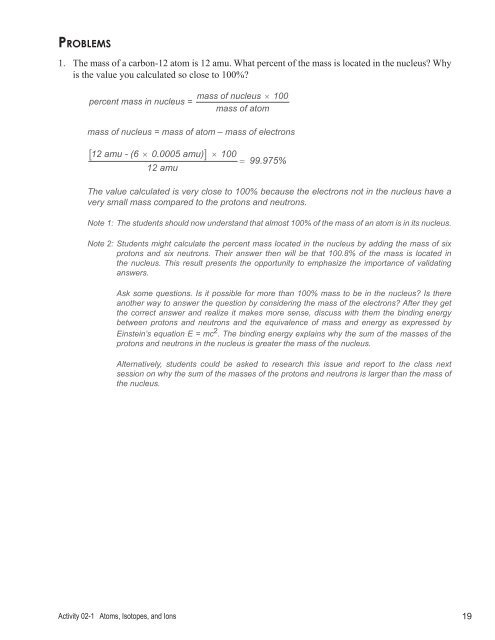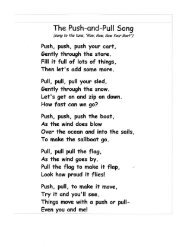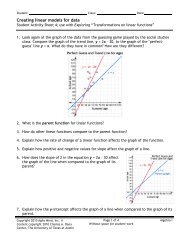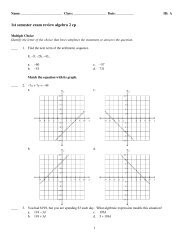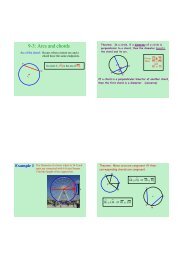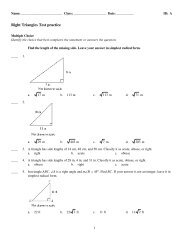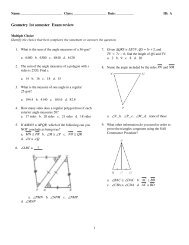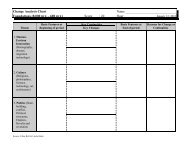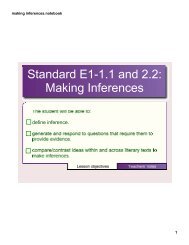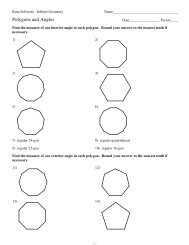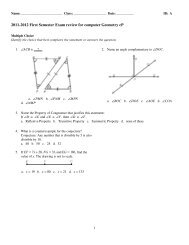You also want an ePaper? Increase the reach of your titles
YUMPU automatically turns print PDFs into web optimized ePapers that Google loves.
PROBLEMS<br />
1. The mass of a carbon-12 atom is 12 amu. What percent of the mass is located in the nucleus? Why<br />
is the value you calculated so close to 100%?<br />
percent mass in nucleus =<br />
mass of nucleus 100<br />
mass of atom<br />
mass of nucleus = mass of atom – mass of electrons<br />
<br />
12 amu - (6 0.0005 amu) 100<br />
12 amu<br />
<br />
<br />
99.975%<br />
The value calculated is very close to 100% because the electrons not in the nucleus have a<br />
very small mass compared to the protons <strong>and</strong> neutrons.<br />
Note 1: The students should now underst<strong>and</strong> that almost 100% of the mass of an atom is in its nucleus.<br />
Note 2: Students might calculate the percent mass located in the nucleus by adding the mass of six<br />
protons <strong>and</strong> six neutrons. Their answer then will be that 100.8% of the mass is located in<br />
the nucleus. This result presents the opportunity to emphasize the importance of validating<br />
answers.<br />
Ask some questions. Is it possible for more than 100% mass to be in the nucleus? Is there<br />
another way to answer the question by considering the mass of the electrons? After they get<br />
the correct answer <strong>and</strong> realize it makes more sense, discuss with them the binding energy<br />
between protons <strong>and</strong> neutrons <strong>and</strong> the equivalence of mass <strong>and</strong> energy as expressed by<br />
Einstein’s equation E = mc 2 . The binding energy explains why the sum of the masses of the<br />
protons <strong>and</strong> neutrons in the nucleus is greater the mass of the nucleus.<br />
Alternatively, students could be asked to research this issue <strong>and</strong> report to the class next<br />
session on why the sum of the masses of the protons <strong>and</strong> neutrons is larger than the mass of<br />
the nucleus.<br />
Activity 02-1 <strong>Atoms</strong>, <strong>Isotopes</strong>, <strong>and</strong> <strong>Ions</strong> 19


